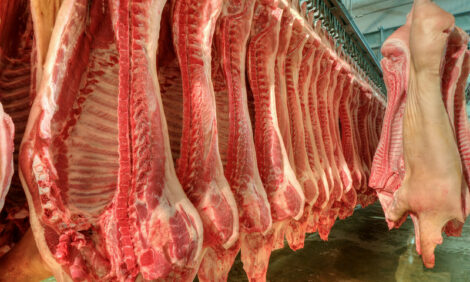



Risk of Transmission of Livestock-associated MRSA to Non-farm Dwellers Negligible
US - At a swine farm with pigs carrying methicillin-resistant Staphylococcus aureus, levels of MRSA among 95 per cent of visitors became virtually undetectable only two hours after exposure.MRSA in the nasal passages was associated with exposure to airborne MRSA and not directly on physical contact with the animals.
The research was published on 29 September in Applied and Environmental Microbiology, a journal of the American Society for Microbiology.
The study was designed to measure how much MRSA volunteer subjects carried after spending time in contact with MRSA-carrying pigs on a farm.
"Most Danish swine farms are now MRSA-positive and thousands of farmworkers are exposed to MRSA daily," said corresponding author Øystein Angen, DVM, PhD, Statens Serum Institut, Denmark, explaining the rationale for the study.
In each of the four trials, the volunteers--most of them students of veterinary medicine or animal husbandry--spent an hour at a MRSA-positive swine farm.
Each volunteer spent two trials as an "active" participant, catching and constraining the pigs, and taking samples from them.
In the other two trials, as "passive" participants, volunteers simply stood around in the same room as the pigs. That structure is called "crossover;" this was the first crossover study to examine livestock to human transmission of MRSA.
"The volunteers in the active group had a significantly increased airborne exposure and nasal carriage level of MRSA compared to the passive volunteers," according to the report.
Interestingly, "Direct physical transfer between the hands and the face could not explain the higher nasal carriage level in the active group."
"Transmission of livestock-associated MRSA to humans is of great concern in Europe, due to the implications for human health and the healthcare system," said Dr Angen.
A better understanding of transmission routes is needed to guide rational interventions to protect farm workers and visitors, and reduce the risk of transmission to society, he said.
Nonetheless, the authors concluded that the risk that farm visitors might transmit MRSA to others off the farm "is most likely negligible due to the observed decline to unquantifiable levels in 95 per cent of the nasal samples" two hours post exposure.
Several investigations had previously tried to map transmission dynamics. These had used indirect measures for physical contact, including time spent working, and work location. But they had failed to present conclusive evidence of transmission routes.
MRSA was first described in humans in 1961, but was not discovered in pigs until 2005. But since then, there has been a steep increase in livestock associated MRSA in people in Denmark.
Since 2012, patients with regular contact with livestock who are admitted to hospital for any reason have been tested for MRSA, and if positive, have been isolated until negative.
However, one third of human cases of livestock associated MRSA in Denmark are not associated with contact with livestock.








